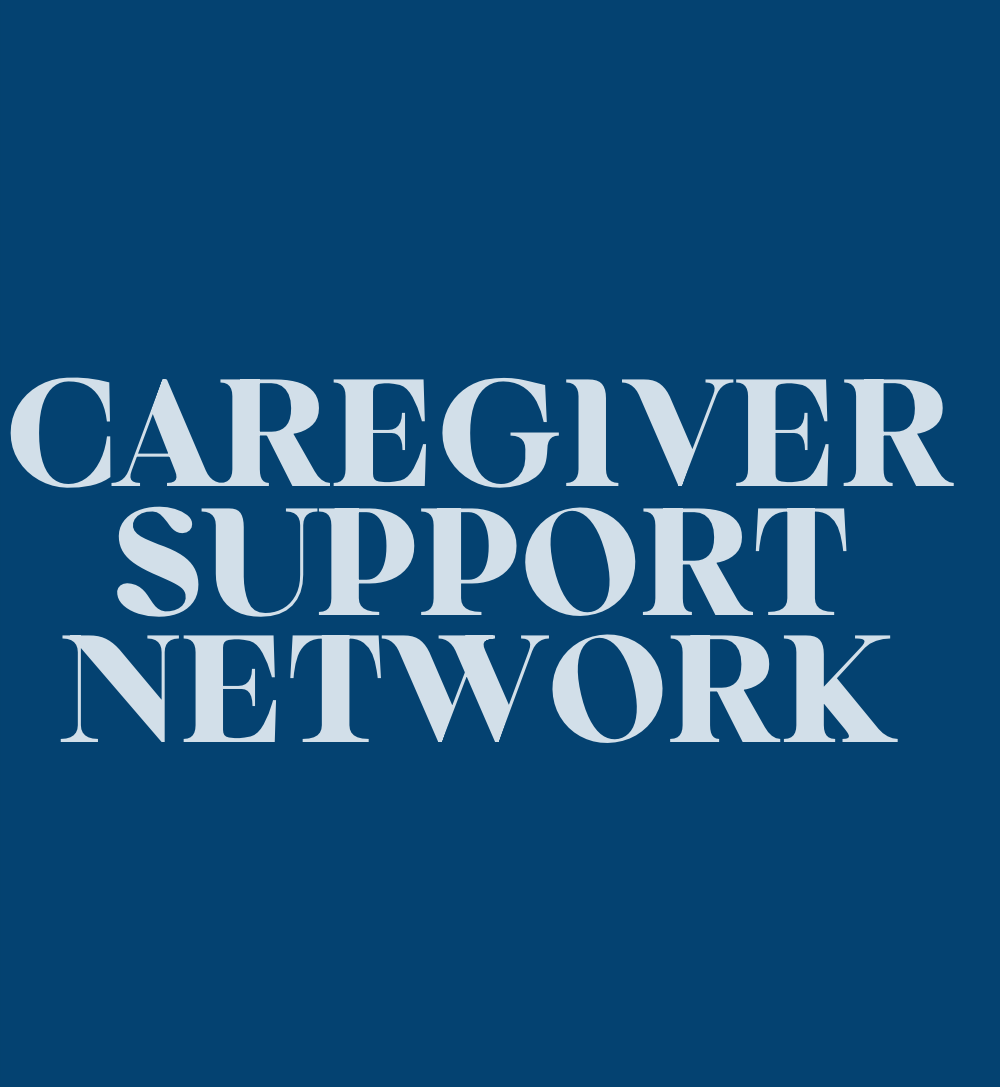Other Age-Related Conditions
Aging and Kidney Health: Is There a Link?

Were you aware that over half of the individuals aged 75 and older are affected by kidney disease?1 The influence of aging on kidney health cannot be overstated, and grasping this dynamic is key to preserving renal function into older age. This piece delves into how aging and kidney disease are interlinked, the impact of aging on renal function, prevalent kidney issues among the elderly, risk factors for kidney disease among seniors, strategies for prevention, and learnings from scholarly studies on the aging kidney.
As we age, it becomes increasingly important to prioritize our kidney health. Let’s dive deeper into the topic and discover how we can take proactive steps to care for our kidneys as we grow older.
Key Takeaways:
- Aging is a significant risk factor for kidney disease, with over 50% of seniors over the age of 75 having kidney disease.
- As people age, their kidneys gradually lose function, leading to a decreased ability to filter waste products and maintain fluid and electrolyte balance.
- Older adults may be more prone to kidney conditions such as urinary tract infections (UTIs) and kidney stones.
- Several risk factors, including high blood pressure, diabetes, and a family history of kidney failure, can increase the likelihood of developing kidney disease in older adults.
- Maintaining a healthy lifestyle, managing underlying health conditions, and regular screenings can help prevent and mitigate the risk of kidney disease in aging adults.
Let’s explore the impact of aging on kidney health in more detail and learn how we can protect and preserve our renal function as we age.
Source: National Institute of Diabetes and Digestive and Kidney Diseases
Understanding Kidney Disease and Aging
As we age, the risk of developing kidney disease increases. Although kidney disease can affect individuals of any age, aging is recognized as a significant risk factor. The exact causes of age-related kidney disease are not fully understood; however, several factors may contribute to its development.
One of the primary factors is the gradual loss of kidney function that occurs with aging. The kidneys play a crucial role in filtering waste products and maintaining fluid and electrolyte balance in the body. Over time, the kidneys may become less efficient, which can lead to the accumulation of toxins and imbalances in the body.
In addition to age-related changes in kidney function, the presence of other health conditions can further increase the risk of kidney disease in older adults. Conditions such as diabetes and high blood pressure are commonly associated with kidney disease and often coexist with aging.
“Aging is recognized as a significant risk factor for kidney disease.”
“The kidneys play a crucial role in filtering waste products and maintaining fluid and electrolyte balance in the body.”
Research suggests that age-related kidney disease may also be influenced by genetic factors and lifestyle choices. Family history can contribute to an individual’s predisposition to kidney disease. Additionally, certain behaviors, such as smoking and excessive alcohol consumption, can further compromise kidney function.
Understanding the complex relationship between aging and kidney disease is essential for early detection, prevention, and management. By recognizing the risk factors associated with age-related kidney disease, individuals can take proactive steps to protect their kidney health.
Age-Related Kidney Disease Risk Factors
| Risk Factors | Explanation |
|---|---|
| Gradual loss of kidney function | Aging leads to a natural decline in kidney function, making individuals more susceptible to kidney disease. |
| Presence of other health conditions | Chronic conditions like diabetes and high blood pressure can increase the risk of kidney disease in older adults. |
| Genetic factors | Family history of kidney disease can contribute to an individual’s likelihood of developing age-related kidney disease. |
| Lifestyle choices | Behaviors such as smoking and excessive alcohol consumption can further impair kidney function. |
By addressing these risk factors and adopting a healthy lifestyle, older adults can mitigate their chances of developing kidney disease. Regular screenings, managing chronic conditions, and maintaining a balanced diet can all contribute to maintaining optimal kidney health.
Next, we will explore the impact of aging on renal function and discuss common kidney conditions that affect older adults.
The Impact of Aging on Renal Function
As people age, their kidneys gradually lose function. This can lead to a decreased ability to filter waste products from the blood and maintain fluid and electrolyte balance. Age-related changes in the kidneys include a decrease in the number and size of functioning nephrons, reduced blood flow to the kidneys, and alterations in the renin-angiotensin system, which regulates blood pressure.
Aging can have a significant impact on renal function, affecting the kidneys’ ability to perform essential tasks in the body. The gradual decline in kidney function can result in several effects, such as:
- Impaired waste filtration: With aging, the kidneys may become less efficient at removing waste products from the blood, leading to the accumulation of toxins in the body.
- Fluid and electrolyte imbalances: As renal function declines, the kidneys may struggle to maintain the proper balance of fluids and electrolytes, potentially causing issues like dehydration and electrolyte abnormalities.
- Changes in blood pressure regulation: The renin-angiotensin system, which plays a crucial role in regulating blood pressure, may be altered in the aging kidneys. This can contribute to hypertension and other cardiovascular complications.
- Reduced drug clearance: Age-related changes in renal function can affect the clearance of medications from the body, increasing the risk of drug toxicity or adverse reactions.
It is important to understand the impact of aging on renal function to promote kidney health and identify potential risks or complications. Regular monitoring of kidney function through blood tests and consultation with healthcare professionals can help in the early detection and management of age-related kidney issues.
Age-Related Changes in the Kidneys
“The kidneys undergo various changes as we age, affecting their ability to function optimally. These changes include a decrease in the number and size of functioning nephrons and alterations in the renin-angiotensin system, among others.”
Common Kidney Conditions in Older Adults
As we age, our bodies become more susceptible to certain kidney conditions. In older adults, two common kidney conditions are urinary tract infections (UTIs) and kidney stones.
Urinary Tract Infections (UTIs): UTIs occur when bacteria enter the urinary system and multiply, causing infection. Older adults may experience symptoms such as pain or a burning sensation during urination, frequent urination, blood in the urine, or cloudy urine. If left untreated, UTIs can lead to more severe complications, such as kidney infection or sepsis.
Kidney Stones: Kidney stones are hard mineral and salt deposits that form in the kidneys. They can cause severe pain when they pass through the urinary tract. Older adults may experience symptoms such as sudden and intense back or abdominal pain, blood in the urine, or frequent urination. Kidney stones can obstruct the flow of urine and increase the risk of urinary tract infections.
If you or a loved one are experiencing symptoms of a UTI or kidney stones, it is essential to seek medical attention. Early detection and treatment can help prevent complications and ensure proper management.
Kidney Condition Symptoms Urinary Tract Infections (UTIs) Pain or burning during urination
Frequent urination
Blood in the urine
Cloudy urineKidney Stones Sudden and intense back or abdominal pain
Blood in the urine
Frequent urination

Risk Factors for Kidney Disease in Aging Population
As we age, the risk of developing kidney disease increases. Several factors contribute to this heightened risk, including:
- High blood pressure: Hypertension is a leading risk factor for kidney disease. The kidneys play a crucial role in regulating blood pressure, so when it remains high over a prolonged period, it can significantly damage these organs.
- Diabetes: Individuals with diabetes are at a higher risk of developing kidney disease. Persistently high blood sugar levels can damage the kidneys’ filtering units, impairing their ability to remove waste and excess fluids from the body.
- Family history of kidney failure: A family history of kidney failure can increase the likelihood of developing kidney disease. Genetic factors may predispose certain individuals to inherit kidney-related conditions, making them more susceptible to renal issues as they age.
- Lifestyle factors: Certain lifestyle choices can also increase the risk of kidney disease in older adults. Smoking and excessive use of over-the-counter pain medications, such as nonsteroidal anti-inflammatory drugs (NSAIDs), have been associated with kidney damage.
It is crucial for older adults to remain aware of these risk factors and take proactive steps to reduce their likelihood of developing kidney disease. Regular screenings for high blood pressure and diabetes, as well as making lifestyle changes to prioritize kidney health, can help mitigate the risk.
By managing blood pressure, blood sugar levels, and adopting a healthy lifestyle, older adults can safeguard their kidney function and promote optimal renal health.
Preventing Kidney Disease in Aging Adults
As we age, it’s important to take proactive steps to prevent kidney disease and maintain optimal kidney health. By adopting a healthy lifestyle and following these preventive measures, we can reduce the risk of kidney disease in aging adults.
Maintain a Healthy Lifestyle
A healthy lifestyle plays a crucial role in preventing kidney disease. Regular exercise, such as brisk walking or swimming, can improve overall health and reduce the risk of chronic conditions that can affect kidney health, such as high blood pressure and diabetes. Aim for at least 30 minutes of moderate-intensity exercise most days of the week.
“Exercise is not only beneficial for our overall well-being but can also have a positive impact on kidney health. It helps maintain healthy blood pressure levels and improves cardiovascular health, which are important factors in preventing kidney disease.”
In addition to exercise, following a balanced diet is essential. Include a variety of fruits, vegetables, whole grains, lean proteins, and low-fat dairy products in your meals. Limit sodium intake to help manage blood pressure and choose foods lower in phosphorus and potassium if advised by your healthcare provider.
Manage Blood Pressure and Blood Sugar Levels
High blood pressure and diabetes are leading causes of kidney disease. It’s important to monitor and manage these conditions to prevent kidney damage. Take prescribed medications as directed, follow a healthy diet, exercise regularly, and avoid smoking to help keep these conditions under control.
Stay Hydrated
Proper hydration is crucial for kidney health. Drinking an adequate amount of water helps flush out toxins and waste products from the body. Aim to drink at least eight glasses of water per day, or more if advised by your healthcare provider.
Avoid Excessive Use of Medications
Certain medications, such as non-steroidal anti-inflammatory drugs (NSAIDs), can harm the kidneys when used excessively or for prolonged periods. Talk to your healthcare provider before taking any over-the-counter medications, especially if you have existing kidney problems or are taking other medications that may interact.
Regular Screening for Kidney Disease
Regular screening is essential to detect kidney disease early, especially in aging adults who may be at higher risk. Annual kidney function tests, such as blood and urine tests, can help identify any signs of kidney dysfunction. Consult with your healthcare provider to determine the appropriate screening frequency based on your individual risk factors.

Taking preventive measures and making lifestyle changes can significantly reduce the risk of kidney disease in aging adults. By prioritizing our kidney health, we can promote overall well-being and enjoy a higher quality of life as we age.
The Role of Aging in Acute Kidney Injury
Aging plays a significant role in the development of acute kidney injury (AKI). AKI refers to a sudden decline in kidney function and can have serious consequences for older adults. The aging process leads to changes in kidney function, making older individuals more susceptible to AKI. Additionally, the prevalence of other health conditions, such as diabetes and high blood pressure, which are risk factors for AKI, tends to increase with age.
Age-related changes in kidney function can impact the kidneys’ ability to filter waste products from the blood and maintain fluid and electrolyte balance. These changes may include a decrease in the number and size of functioning nephrons, reduced blood flow to the kidneys, and alterations in the renin-angiotensin system, which regulates blood pressure.
In older adults, these age-related changes can make the kidneys more vulnerable to injury and less capable of recovering from insult, increasing the risk of developing AKI. Additionally, the presence of other health conditions that commonly occur in older adults, such as cardiovascular disease or the use of certain medications, can further contribute to AKI.
It’s crucial for healthcare professionals to be aware of the increased risk of AKI in aging adults and take appropriate measures to prevent, detect, and manage this condition. Early recognition and intervention are essential in minimizing the impact of AKI and improving outcomes for older adults.
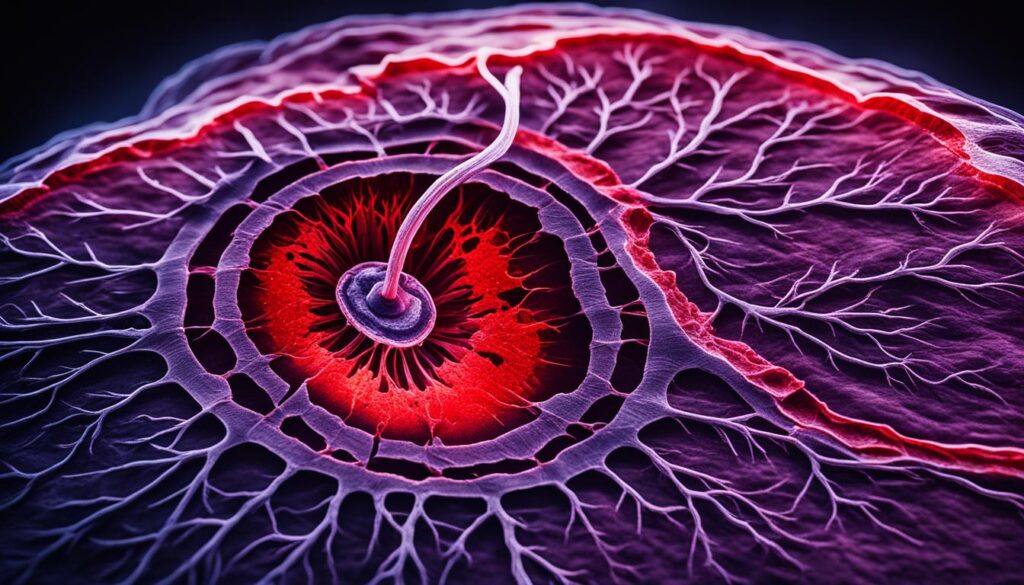
Statistics on Acute Kidney Injury in Aging Adults:
| Age Group | Prevalence of AKI |
|---|---|
| 60-74 years | 20-30% |
| 75+ years | 30-40% |
These statistics highlight the substantial impact of aging on the occurrence of AKI. As individuals age, their risk of developing AKI increases significantly, underscoring the importance of proactive care and prevention strategies in managing kidney health in the aging population.
The Link Between Aging and Chronic Kidney Disease
Chronic kidney disease (CKD) is a progressive condition characterized by the gradual loss of kidney function over time. Aging is a significant risk factor for the development and progression of CKD. As people age, their kidneys become less efficient at filtering waste products and maintaining fluid balance, making them more susceptible to CKD.
Aging-related changes in the kidneys, such as a decrease in the number and size of functioning nephrons, reduced blood flow to the kidneys, and alterations in the renin-angiotensin system, can contribute to the development and progression of CKD.

The Link Between Aging and CKD: Key Points
- As people age, their kidneys become less efficient at filtering waste products and maintaining fluid balance, increasing the risk of CKD.
- Aging-related changes in the kidneys, including a decrease in the number and size of functioning nephrons, reduced blood flow, and alterations in the renin-angiotensin system, contribute to the development and progression of CKD.
Understanding the link between aging and CKD is crucial for early detection, prevention, and management of kidney disease in the aging population. Regular screenings, maintaining a healthy lifestyle, and managing underlying health conditions can help optimize kidney health and reduce the risk of CKD.
Comprehensive Infochart for Chronic Kidney Disease (CKD)
Chronic Kidney Disease (CKD)
- What is CKD?
- A progressive condition where the kidneys gradually lose their ability to filter waste and excess fluids from the blood.
- Develops over months or years.
- Causes
- Top two causes:
- Diabetes
- High blood pressure (hypertension)
- Other causes:
- Glomerulonephritis (inflammation of the kidney’s filters)
- Polycystic kidney disease (inherited)
- Long-term use of certain medications
- Top two causes:
- Symptoms
- Often no symptoms in early stages
- Later stages may include:
- Fatigue
- Swelling in feet, ankles, or around the eyes
- Loss of appetite
- Nausea and vomiting
- Itching
- Trouble sleeping
- Shortness of breath
- Stages of CKD
- 5 stages based on kidney function (measured by GFR)
- Stage 1: Mild kidney damage
- Stage 2: Mildly reduced kidney function
- Stage 3: Moderately reduced kidney function
- Stage 4: Severely reduced kidney function
- Stage 5: Kidney Failure (end-stage renal disease)
- 5 stages based on kidney function (measured by GFR)
- Risk Factors
- Age (over 60)
- Diabetes
- High blood pressure
- Family history of kidney disease
- Cardiovascular disease
- Obesity
- Complications
- Heart disease
- Anemia
- Weak bones
- Fluid buildup
- Nerve damage
- Increased risk of infections
- Prevention
- Manage diabetes and high blood pressure
- Healthy diet and exercise
- Maintain a healthy weight
- Avoid smoking
- Limit alcohol intake
- Regular checkups with your doctor
- Treatment
- Focus on slowing disease progression and managing complications
- Medications for blood pressure, blood sugar, complications
- Dietary changes (restricting salt, protein, etc.)
- Dialysis or kidney transplant in severe cases
Important Note: CKD is often called a “silent” disease because many people show no symptoms in the early stages. Regular checkups are essential for early detection and effective management.
Key Points Actions to Take Aging is a significant risk factor for CKD. Regular screenings for kidney disease Aging-related changes in the kidneys contribute to CKD. Maintain a healthy lifestyle Early detection and management are crucial. Manage underlying health conditions
Understanding the Aging Kidney: Insights from Research
Scientific research has provided valuable insights into the effects of aging on kidney function. Studies have revealed age-related changes in renal hemodynamics, glomerular structure, and the nitric oxide system. These changes play a crucial role in the gradual decline of renal function and increase the risk of kidney disease among the aging population.
Research on aging and the kidney has shown that renal hemodynamics, which involve the blood flow and pressure within the kidneys, undergo alterations as a person ages. This can impact the efficiency of the kidneys in filtering waste products from the blood and maintaining fluid balance. Age-related changes in renal hemodynamics contribute to the reduced ability of the kidneys to perform their vital functions.
“Age-related changes in renal hemodynamics can significantly impact kidney function, potentially leading to the development of kidney disease in older adults.”
Furthermore, studies have revealed age-related structural changes within the glomeruli, the microscopic units responsible for filtering blood in the kidneys. These changes include alterations in the size and number of glomeruli, which can further impair renal function. The gradual loss of glomeruli with age is a significant contributor to decreased kidney function over time.
“Age-related alterations in glomerular structure can compromise the kidney’s ability to effectively filter waste products from the blood, increasing the risk of kidney disease in the aging population.”
The nitric oxide system, which regulates blood vessel dilation and constriction, also undergoes changes with age. Research has shown that the nitric oxide system plays a crucial role in maintaining renal blood flow and overall kidney function. Age-related alterations in this system can lead to decreased blood flow to the kidneys and impaired kidney function.
“Dysfunction of the nitric oxide system due to aging can contribute to reduced renal blood flow and impaired kidney function, increasing the susceptibility to kidney disease.”
Insights from Research on Aging and the Kidney
| Research Area | Findings |
|---|---|
| Renal Hemodynamics | Alterations in blood flow and pressure within the kidneys contribute to reduced renal function and increased risk of kidney disease in older adults. |
| Glomerular Structure | Age-related changes in the size and number of glomeruli compromise the kidney’s ability to effectively filter waste products, leading to a higher risk of kidney disease. |
| Nitric Oxide System | Age-related dysfunction of the nitric oxide system impairs renal blood flow and overall kidney function, increasing susceptibility to kidney disease. |
These insights from research shed light on the complex relationship between aging and kidney function. By understanding the underlying mechanisms involved, we can develop strategies for early detection, prevention, and management of kidney disease in the aging population.

Conclusion
Aging can have a significant impact on kidney health, increasing the risk of kidney disease and other renal conditions. As we age, our kidneys gradually lose function, making it crucial for us to take proactive steps to care for our kidneys and optimize their health.
Regular screenings are essential in detecting kidney disease early on, especially for individuals over the age of 60 and those in high-risk groups. By identifying kidney disease in its early stages, we can implement preventive measures and interventions to slow its progression.
Maintaining a healthy lifestyle is also vital for optimal renal health. This includes following a balanced diet, engaging in regular physical activity, managing blood pressure and blood sugar levels, and staying hydrated. Avoiding excessive use of medications that can harm the kidneys is also important.
In conclusion, as we age, it is crucial for us to prioritize our kidney health through preventive care and lifestyle choices. By doing so, we can reduce the risk of kidney disease and other renal conditions, leading to a better quality of life as we grow older.
Yes, aging can impact kidney function and increase the risk of developing kidney disease. People over the age of 60 are more likely to have kidney disease, with estimates suggesting that over 50% of seniors over the age of 75 have kidney disease.
The exact causes of age-related kidney disease are not fully understood, but factors such as the gradual loss of kidney function and the presence of other health conditions, like diabetes and high blood pressure, may contribute.
As people age, their kidneys gradually lose function. This can lead to a decreased ability to filter waste products from the blood and maintain fluid and electrolyte balance. Age-related changes in the kidneys include a decrease in the number and size of functioning nephrons, reduced blood flow to the kidneys, and alterations in the renin-angiotensin system, which regulates blood pressure. Older adults may be more prone to urinary tract infections (UTIs) and kidney stones. UTIs can cause symptoms like pain and frequent urination, while kidney stones can lead to severe pain and obstruction of urine flow.
Several risk factors can increase the likelihood of developing kidney disease in older adults, including high blood pressure, diabetes, a family history of kidney failure, and certain lifestyle factors like smoking and excessive use of over-the-counter pain medications.
Preventive measures include maintaining a healthy lifestyle with regular exercise, following a balanced diet, managing blood pressure and blood sugar levels, staying hydrated, and avoiding excessive use of medications that can harm the kidneys. Regular screening for kidney disease is also recommended.
Aging is a known risk factor for acute kidney injury (AKI), which is a sudden loss of kidney function. Older adults may be more susceptible to AKI due to age-related changes in kidney function and a higher likelihood of developing other health conditions that can contribute to kidney injury.
Aging is a significant risk factor for the development and progression of chronic kidney disease (CKD). As people age, their kidneys become less efficient at filtering waste products and maintaining fluid balance, making them more susceptible to CKD. Scientific research has provided insights into the aging process of the kidneys, showing age-related changes in renal hemodynamics, glomerular structure, and the nitric oxide system. These changes can contribute to reduced renal function and an increased risk of kidney disease in the aging population.
Aging adults can care for their kidneys by being proactive in their health. This includes understanding the risk factors for kidney disease, maintaining a healthy lifestyle, managing underlying health conditions, and seeking regular screenings for kidney disease.
FAQ
Is there a link between aging and kidney disease?
What are the causes of kidney disease in older adults?
How does aging affect renal function?
What are some common kidney conditions in older adults?
What are the risk factors for kidney disease in older adults?
How can kidney disease be prevented in aging adults?
What is the link between aging and acute kidney injury?
How does aging contribute to chronic kidney disease?
What does research say about the aging kidney?
How can aging adults care for their kidneys?

Vision and Hearing Loss Support
What Innovative Hearing Solutions Are Changing Lives?
Witness how innovative hearing solutions are revolutionizing lives, reshaping the way individuals interact with sound in extraordinary ways.
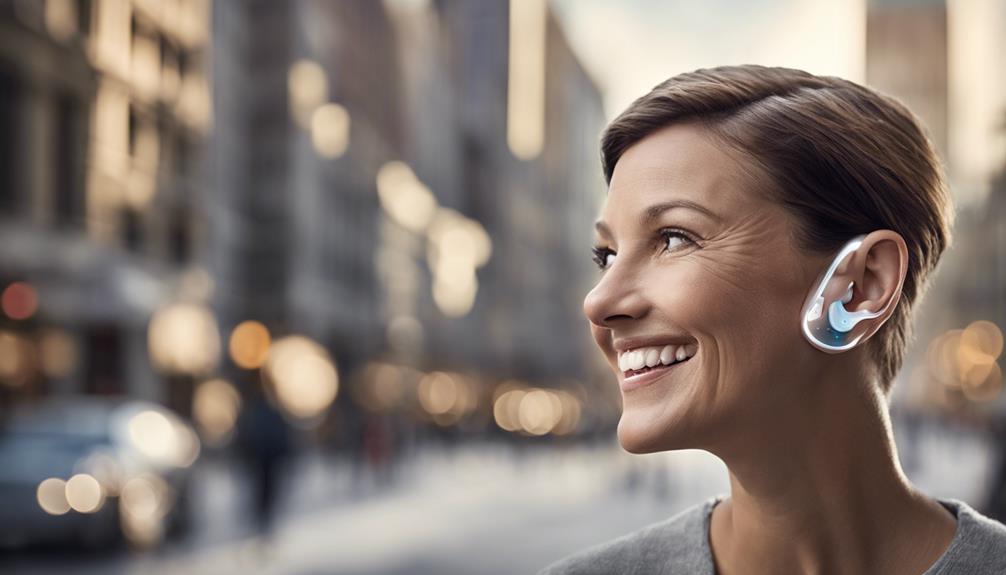
Although it might be thought that losing one’s hearing is a natural aspect of growing older, the truth is groundbreaking hearing aids are transforming lives in extraordinary ways.
From cutting-edge hearing aid technology to revolutionary cochlear implant advancements, the field of audiology is experiencing groundbreaking developments that are improving the lives of individuals with hearing impairments.
By exploring the latest advancements in speech-to-text glasses innovation, crowd noise filtering app development, and regenerative drug therapy breakthroughs, we uncover a world where technology is not just assisting but truly transforming the way people interact with sound.
Key Takeaways
- Bluetooth connectivity and AI in hearing aids enhance personalization.
- Cochlear implants offer direct audio streaming and advanced features.
- Speech-to-text glasses provide real-time subtitles and transcription software.
- Regenerative drug therapy shows promise in restoring damaged cells for hearing loss.
Cutting-Edge Hearing Aid Technology
As we delve into the realm of Cutting-Edge Hearing Aid Technology, we're introduced to a world where innovative advancements revolutionize the way individuals experience sound and enhance their quality of life. The line between hearing aids and cutting-edge technology has blurred, offering solutions that not only aid in hearing loss but also help people stay connected and engaged in various activities. With Bluetooth connectivity, these aids allow for direct audio streaming from digital devices, ensuring seamless integration into daily life. Features like GPS tracking not only prevent loss but also enhance usability, providing a sense of security for users.
Moreover, the incorporation of AI in hearing aids enables personalized adjustments, leading to optimal performance tailored to individual needs. This not only improves sound quality but also ensures comfort and effectiveness. Additionally, advancements in battery life offer all-day usage on a single charge, promoting convenience and uninterrupted support for those with hearing difficulties. The integration of health monitoring capabilities further contributes to overall well-being by tracking physical activity and cognitive health. Innovative hearing solutions are truly transforming the way we perceive and interact with the world around us.
Revolutionary Cochlear Implants Advancements
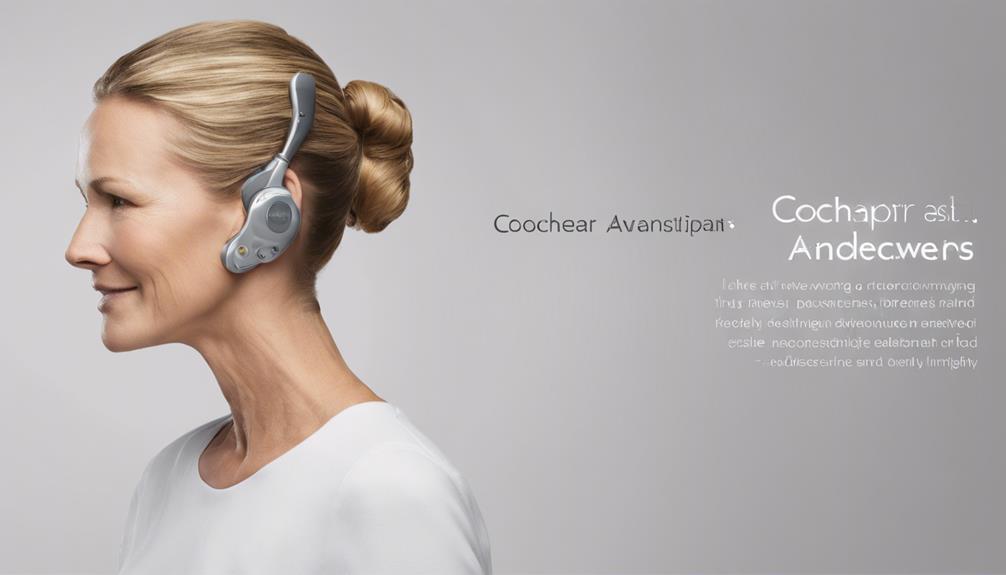
With wireless connectivity enhancing communication capabilities, cochlear implants have undergone revolutionary advancements in improving sound quality and connectivity for users. These advancements haven't only transformed the way individuals with hearing loss experience sound but have also opened up new possibilities for improved communication and accessibility.
Here are some key points highlighting the latest developments in cochlear implants:
- Direct Audio Streaming: Cochlear implants now support direct audio streaming, allowing users to seamlessly connect to various audio sources without the need for additional accessories.
- Bluetooth Technology: The integration of Bluetooth technology in cochlear implants reduces interference and ensures clearer sound quality, enhancing the overall listening experience.
- Advanced Features: Modern cochlear implants come equipped with advanced features that cater to different listening environments, providing users with greater comfort and convenience.
- Improved User Experience: These advancements in sound quality and connectivity not only enhance the user experience but also promote better integration with digital devices, making daily activities more accessible and enjoyable.
Speech-to-Text Glasses Innovation
Our exploration into innovative hearing solutions continues with a remarkable development in the realm of auditory assistance – the groundbreaking Speech-to-Text Glasses Innovation. Smart glasses embedded with real-time speech-to-subtitles technology leverage augmented reality to display subtitles directly on the lenses, revolutionizing communication for individuals with hearing loss. Vuzix has already introduced smart glasses equipped with transcription software, a step towards enhancing accessibility and inclusivity. In the next few years, we anticipate the widespread availability of affordable eyewear featuring automatic captions, further bridging the gap in effective communication. This innovative speech-to-subtitles technology represents a significant advancement in communication enhancement, offering a practical solution to improve interactions for those with hearing impairments. By integrating cutting-edge features into everyday eyewear, these smart glasses are paving the way for a more inclusive and connected world.
| Key Points | Description |
|---|---|
| Real-time subtitles | Augmented reality technology displaying subtitles on smart glasses |
| Transcription software | Vuzix smart glasses incorporating software for individuals with hearing loss |
| Automatic captions | Future affordable eyewear expected to have automatic captioning features |
| Communication enhancement | Speech-to-subtitles technology providing innovative solutions for hearing loss |
Crowd Noise Filtering App Development

Developers are creating a Crowd Noise Filtering App to enhance the listening experience of individuals with hearing impairments by isolating speech in crowded environments using AI technology. This innovative app employs de-noising algorithms to improve conversation understanding in noisy settings. Anticipated advancements in powerful de-noising programs within hearing technology over the next five years signal a promising future for communication enhancement in challenging auditory environments. By focusing on technologies that prioritize speech clarity and comprehension for hearing-impaired individuals, this app aims to revolutionize how individuals with hearing loss experience and engage in conversations in noisy situations.
- App for isolating speech in crowded environments uses AI to enhance listening experience for hearing-impaired individuals.
- De-noising algorithms within the app improve conversation understanding in noisy settings.
- Anticipated availability of powerful de-noising programs in hearing technology within the next 5 years.
- Focus on developing technologies that enhance communication in challenging auditory environments.
Regenerative Drug Therapy Breakthroughs
Through regenerative drug therapy breakthroughs, researchers have successfully activated chemical switches to restore damaged cells responsible for hearing, offering hope for individuals affected by various forms of hearing impairments. The potential of regrowing cells that help in hearing holds promise for restoring hearing lost due to damaged hair cells, especially in conditions like age-related hearing loss. Inspired by natural hair cell regrowth in animals like birds and fish, scientists are now focusing on developing hair cell regrowth therapies for humans, with ongoing clinical trials for hereditary or acquired hearing loss. These innovative approaches aim to provide permanent solutions for various hearing impairments by addressing the root cause of cell damage. Below is a table summarizing key aspects of regenerative drug therapy in the context of hearing loss:
| Regenerative Drug Therapy for Hearing Loss | |
|---|---|
| Focus | Restoring damaged cells responsible for hearing |
| Applications | Age-related hearing loss, hereditary/acquired hearing loss |
| Progress | Clinical trials ongoing for hair cell regrowth therapies |
Frequently Asked Questions
What Is the New Technology to Restore Hearing?
We've seen remarkable advances in technology for restoring hearing. Gene therapy replaces mutated genes with healthy ones, regenerative medicine regrows damaged sensory cells in the inner ear, and artificial intelligence in personalized hearing aids enhances sound quality.
Cochlear implants with wireless connectivity improve communication, and ongoing human trials for hair cell regrowth therapies offer hope for the future. These cutting-edge solutions are revolutionizing the way we address hearing loss and transforming lives.
What Innovative Technology or Surgeries Are Helping Our Deaf Patients?
We see the impact of innovative hearing solutions daily. From gene therapy to cochlear implants with Bluetooth connectivity, the advancements in technology and surgeries are truly transforming the lives of our deaf patients.
These cutting-edge options offer hope and improved quality of life. Our team is dedicated to exploring and implementing these groundbreaking techniques to help our patients hear the world in a whole new way.
What Is the Modern Treatment for Hearing Loss?
When it comes to modern treatment for hearing loss, advancements in regenerative medicine, gene therapy, and cochlear implants are revolutionizing the field. Drug therapies are being developed to regrow hearing cells, while clinical trials for hair cell regeneration offer hope for age-related or genetic hearing loss.
Gene therapy shows promise in addressing hereditary hearing impairments.
Advanced cochlear implants with wireless connectivity are enhancing communication and daily activities for users.
What Is the New Technology for the Deaf?
When it comes to new technology for the deaf, advancements are truly remarkable. From speech-to-subtitles in real-time to transcription software on smart glasses, the innovations are changing lives.
Imagine the possibilities of AI isolating speech in noisy environments for better listening experiences. With affordable eyewear featuring automatic captions on the horizon and powerful de-noising programs expected soon, the future looks bright for those with hearing challenges.
Conclusion
In this ever-evolving landscape of hearing solutions, we're witnessing a symphony of innovation harmonizing to create a crescendo of life-changing possibilities.
From cutting-edge hearing aids to revolutionary cochlear implants, the melody of advancements is bringing clarity and hope to those with hearing impairments.
With each breakthrough, we're composing a new era of sound, where individuals can once again experience the world in all its rich and vibrant tones.
Albert brings a wealth of knowledge and expertise to our writing team. With a background in caregiving and a deep understanding of the challenges faced by caregivers, Albert’s writing resonates with authenticity and empathy. He is committed to delivering high-quality content that empowers and supports caregivers on their journey.
Vision and Hearing Loss Support
Tell If Hearing Loss Is Permanent or Temporary: 5 Key Differences
Wondering how to distinguish between permanent and temporary hearing loss? Find out the key signs and factors that can help you determine the difference.

Recently, a pal shared they suffered from abrupt hearing impairment following a high-volume music event. This raised a question for us: how does one differentiate between lasting and short-lived hearing damage?
Understanding the nuances between these two types is essential, as it can impact the necessary steps for treatment and management. As we explore the signs and factors that differentiate temporary from permanent hearing loss, we aim to provide insights that could potentially help individuals navigate this aspect of their health more effectively.
Key Takeaways
- Differentiate between sensorineural and conductive causes for permanent or temporary hearing loss.
- Immediate evaluation is crucial for sudden hearing loss to determine permanency.
- Monitoring symptoms and audiometric tests help distinguish temporary from permanent hearing loss.
- Consult an audiologist for accurate diagnosis and tailored interventions for hearing loss.
Types of Hearing Loss
Exploring the various types of hearing loss provides crucial insights into the diverse mechanisms and conditions that can impact an individual's auditory function.
Sensorineural hearing loss involves damage to the nerves and hair cells responsible for transmitting signals from the inner ear to the brain, leading to difficulties in processing sound.
On the other hand, conductive hearing loss can occur due to obstructions such as ear infections, earwax buildup, or foreign objects in the ear canal, which hinder the conduction of sound waves.
Mixed hearing loss combines aspects of both sensorineural and conductive hearing loss, posing challenges in treatment planning.
Central hearing loss, affecting the central auditory nervous system, disrupts the brain's ability to interpret sound signals correctly.
Sudden hearing loss, characterized by a rapid decline in auditory function, necessitates immediate evaluation and intervention to prevent long-term complications.
Understanding these distinct types of hearing loss is essential in determining appropriate management strategies and providing effective support for individuals experiencing varying degrees of hearing impairment.
Causes of Temporary Hearing Loss
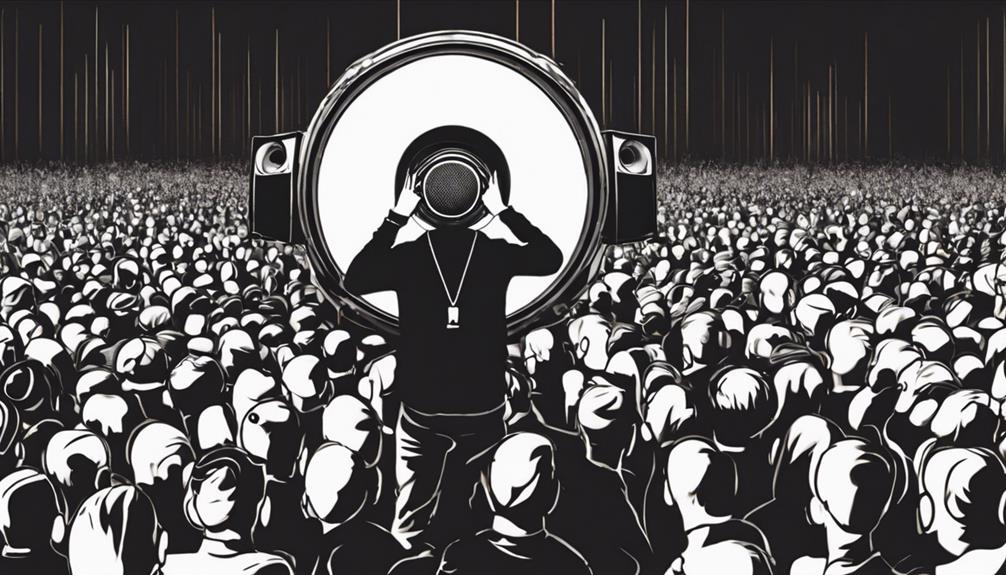
Temporary hearing loss can result from various causes such as ear infections, medications, allergies, loud noise trauma, and obstructions. When individuals experience temporary hearing loss, they may notice symptoms like muffled sounds, difficulty hearing high-pitched noises, balance issues, and tinnitus. This type of hearing loss can occur suddenly or develop over a short period, affecting people of all ages.
To determine the severity and type of temporary hearing loss, evaluation tests such as pure tone audiometry, tuning fork tests, and auditory brain stem response tests are commonly utilized.
The good news is that with appropriate treatment, temporary hearing loss can often be resolved. By addressing the underlying cause, whether it be treating an ear infection, adjusting medications, protecting the ears from loud noises, or removing obstructions, individuals can regain their normal hearing function. Seeking timely evaluation and intervention is crucial in managing temporary hearing loss effectively and preventing it from becoming permanent.
Causes of Permanent Hearing Loss
Permanent hearing loss can be caused by a variety of factors, including prolonged exposure to loud noise, age-related changes in the inner ear, certain health conditions, ototoxic medications, and gradual processes that necessitate early identification for appropriate management.
Prolonged exposure to loud noises can damage the delicate hair cells in the inner ear, leading to irreversible hearing loss. Age-related hearing loss, known as presbycusis, is a common cause of permanent hearing impairment due to natural changes in the inner ear over time. Additionally, certain health conditions such as genetic disorders, autoimmune diseases, Meniere's disease, viral infections, and head trauma can result in permanent hearing loss.
Furthermore, medications with ototoxic effects can contribute to irreversible damage to the hearing mechanism, leading to permanent hearing impairment. Recognizing the signs of these conditions early on is crucial for effective management and intervention to mitigate the progression of permanent hearing loss.
Distinguishing Permanent From Temporary Loss

When differentiating between hearing loss types, understanding the distinction between temporary and permanent conditions is crucial for effective management and intervention. Permanent hearing loss is typically irreversible, necessitating long-term treatment or management strategies.
Conversely, temporary hearing loss may resolve spontaneously or with appropriate treatment, such as addressing underlying causes like ear infections or earwax buildup. Audiological tests play a vital role in determining the type and severity of hearing loss, aiding in the differentiation between temporary and permanent conditions.
Monitoring the duration and progression of hearing loss symptoms can offer valuable insights into whether the loss is temporary or permanent. Seeking prompt evaluation by a healthcare professional is essential as it can lead to an accurate diagnosis and appropriate intervention for either temporary or permanent hearing loss.
Preventing and Treating Hearing Loss
Utilizing protective ear gear in noisy environments can significantly lower the risk of enduring hearing loss. Hearing loss can occur due to various factors, including exposure to loud noises and certain medical conditions. To address hearing loss effectively, it's crucial to take the best course of action promptly.
Here are four essential steps to prevent and treat hearing loss:
- Wear Ear Protection: Invest in quality earplugs or earmuffs to safeguard your hearing in loud settings, such as concerts or construction sites. Prioritizing ear protection can help prevent potential damage to your hearing.
- Seek Immediate Medical Attention: If you experience sudden hearing loss or notice a decline in your hearing abilities, see a doctor right away. Prompt evaluation can determine the causes of temporary hearing issues and guide appropriate treatment.
- Consult an Audiologist: Professional evaluation by an audiologist can accurately diagnose the nature of your hearing loss—whether it's permanent or temporary. They can recommend suitable interventions, such as hearing aids or cochlear implants, tailored to your specific needs.
- Follow Up Regularly: After initiating treatment, maintain regular follow-up appointments to monitor your hearing health. Tracking any changes in your hearing function can help manage hearing loss effectively and adjust interventions as needed.
Frequently Asked Questions
How Long Does It Take for Temporary Hearing Loss to Go Away?
Temporary hearing loss typically resolves in a few hours to a few days, depending on the underlying cause. Seeking prompt medical attention and treatment can help speed up the recovery process.
Monitoring symptoms and consulting a healthcare professional can provide a clearer timeline for the duration of temporary hearing loss. Remember, early intervention is key to addressing temporary hearing loss effectively.
What Is the Difference Between Permanent and Temporary Hearing Loss?
When it comes to hearing loss, understanding the difference between permanent and temporary conditions is crucial. Permanent hearing loss is irreversible and often requires ongoing management, like hearing aids.
Temporary hearing loss, on the other hand, can be resolved with appropriate treatment. Differentiating between the two involves assessing underlying causes and conducting diagnostic tests.
Timely intervention and professional evaluation play a key role in determining the nature of the hearing loss and implementing effective treatment strategies.
Can Hearing Loss Go Away on Its Own?
Absolutely, hearing loss can indeed go away on its own, depending on the underlying cause. Factors like ear infections, earwax buildup, or certain medications can trigger temporary hearing issues that may resolve spontaneously.
It's crucial to monitor symptoms closely and seek professional evaluation to determine the nature of the hearing loss. Quick action and proper care can make all the difference in whether our hearing loss is fleeting or lasting.
How Do You Regain Temporary Hearing Loss?
We can regain temporary hearing loss through various methods, including seeking medical evaluation for proper diagnosis and treatment. Depending on the cause, treatment options like medication for infections, earwax removal, or noise reduction strategies can aid in recovery.
Monitoring symptoms and prompt medical attention are crucial in regaining temporary hearing loss effectively and preventing complications. Professional guidance from an audiologist or ENT specialist can provide tailored solutions for individual cases of temporary hearing loss.
Conclusion
In conclusion, whether our hearing loss is temporary or permanent, seeking help from professionals is key. By understanding the causes, distinguishing between the types, and taking preventative measures, we can better manage our hearing health.
Remember, our ears are precious and deserve the best care possible. Let's listen closely to our bodies and take action when needed to ensure a sound future ahead.
Albert brings a wealth of knowledge and expertise to our writing team. With a background in caregiving and a deep understanding of the challenges faced by caregivers, Albert’s writing resonates with authenticity and empathy. He is committed to delivering high-quality content that empowers and supports caregivers on their journey.
Vision and Hearing Loss Support
What Hearing Aids Are Available in Livingston?
Navigate through the diverse range of hearing aids available in Livingston, each offering unique features to revolutionize your hearing – you won't want to miss out on these innovative options!
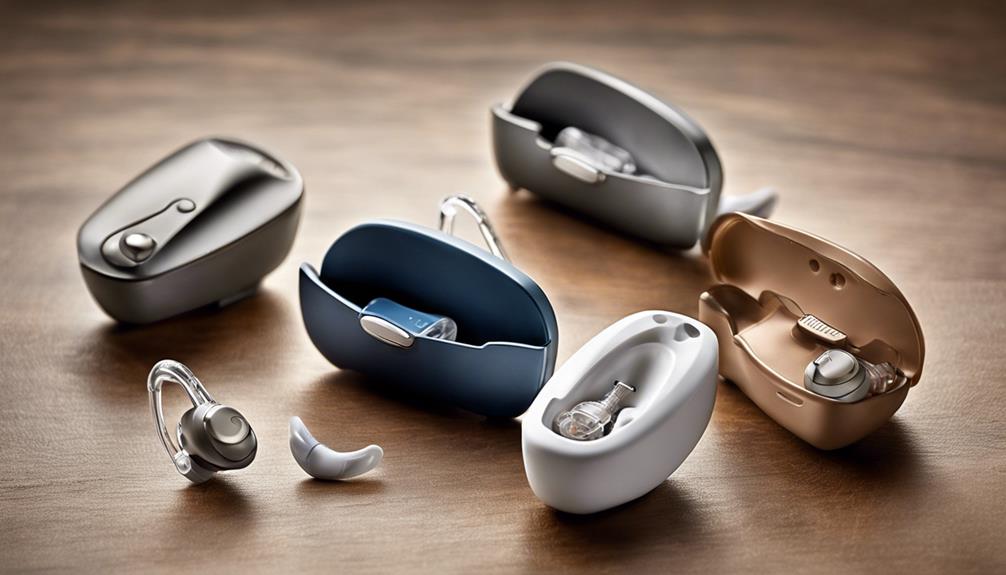
Were you aware that in Livingston, around 15% of individuals aged 18 and above experience difficulties with their hearing?
The prevalence of hearing difficulties in the area has sparked a growing interest in the various types of hearing aids available.
From discreet designs to cutting-edge technology, the options are diverse and cater to a wide range of needs.
Let’s explore the array of hearing aids waiting to enhance your hearing experience in Livingston.
Key Takeaways
- Livingston offers a variety of hearing aid styles, including IIC, CIC, ITC, ITE, and RIC.
- Features like noise reduction, Bluetooth, custom molding, and rechargeable batteries enhance listening experiences.
- Consider factors like degree of hearing loss, lifestyle, and technology when choosing a hearing aid.
- Professional providers in Livingston offer personalized solutions, accurate diagnoses, and tailored care for optimal hearing health.
Hearing Aid Styles Overview
In Livingston, we offer a comprehensive overview of various hearing aid styles to cater to diverse preferences and needs. Our goal is to provide solutions that enhance better hearing and improve the quality of life for our clients. The range of hearing aids available includes Invisible-in-Canal (IIC), Completely-in-Canal (CIC), In-the-Canal (ITC), In-the-Ear (ITE), and Receiver-in-Canal (RIC) styles. Each style incorporates advanced technology such as noise reduction, Bluetooth connectivity, custom molding, and rechargeable batteries to meet individual requirements effectively.
For those looking for a discreet option that fits snugly in the ear canal, the Invisible-in-Canal (IIC) style may be ideal. On the other hand, the Receiver-in-Canal (RIC) style offers a lightweight design and powerful listening experience. We understand the importance of offering a variety of hearing aid styles that prioritize comfort and personalized solutions, ensuring that our clients receive tailored recommendations from our experienced hearing professionals.
Pros and Cons of Different Models

Let’s delve into the advantages and disadvantages of the various hearing aid models available to help you make an informed decision.
Type of Hearing Pros Cons Invisible-in-Canal Snug fit, noise reduction, ideal for active lifestyle Limited power for severe hearing loss Completely-in-Canal Low-profile, external controls for easy adjustment Small size may be difficult to handle for some users In-the-Canal Custom molding, Bluetooth connectivity, rechargeable May be visible in the ear, susceptible to moisture damage In-the-Ear Full-shell design, long battery life Less discreet, may pick up wind noise Receiver-in-Canal Lightweight, comfortable, high-powered listening Requires more frequent maintenance, higher cost
When considering which model to choose, it’s essential to factor in your hearing needs, the latest updates in technology, sound quality, and the degree of hearing loss you are experiencing. Each type of hearing aid has its own set of advantages and disadvantages, so it’s crucial to weigh these factors against your preferences and lifestyle to find the best match for you.
Customizable Features for Hearing Aids
Exploring the customizable features of modern hearing aids reveals a range of advanced technologies designed to enhance the user experience and improve hearing capabilities.
Noise-canceling technology is a valuable feature that helps reduce background noise, making it easier to focus on conversations or specific sounds.
Many modern hearing aids offer automatic adjustment capabilities, which adapt settings based on the listening environment, ensuring optimal hearing in various situations.
For convenience and eco-friendliness, some hearing aids come equipped with rechargeable batteries, eliminating the need for frequent battery changes.
Bluetooth connectivity is another common feature, allowing seamless connection with mobile devices for streaming audio or making hands-free calls.
Advanced models may even incorporate artificial intelligence, enabling personalized and adaptive sound processing tailored to individual preferences and environments.
These customizable features collectively contribute to a more seamless and personalized hearing aid experience, catering to diverse user needs and preferences.
Choosing the Right Hearing Aid
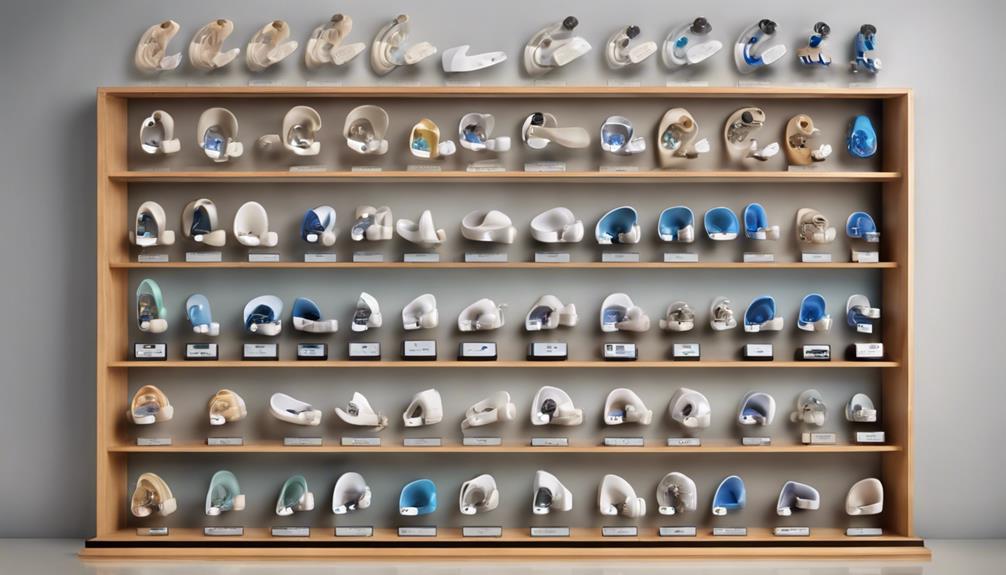
When selecting the right hearing aid, it’s crucial to consider various factors such as the degree of hearing loss, required features, comfort level, lifestyle, and the type of hearing aid that best suits your needs. To ensure you make an informed decision, consult with our team of experts who can assess your specific requirements and recommend the most suitable solution.
When choosing a hearing aid, take into account the following:
- Evaluate the latest hearing aid technology available, including adjustable features and different types like In-the-Ear (ITE), Receiver-in-Canal (RIC), Completely-in-Canal (CIC), In-the-Canal (ITC), or Invisible-in-Canal (IIC), to find the best fit for your needs.
- Consider lifestyle considerations such as your daily activities and listening environments to determine the features needed for optimal performance and comfort throughout the day.
- Ensure a personalized fit and effective outcome by undergoing a comprehensive evaluation with a Doctor of Audiology, including Real Ear Verification, to guarantee the selected hearing aid meets your specific requirements.
Finding Hearing Aid Providers in Livingston
To explore the availability of hearing aid providers in Livingston, one can connect with trained hearing consultants at Livingston Hearing Aid. These professionals offer personalized solutions tailored to individual hearing needs. Whether you’re looking for specialists in audiology, ENT, or hearing aids in Livingston, they can provide accurate diagnoses and tailored care to address your specific requirements.
By contacting us, you can work together with these experts to determine the best course of action for your hearing health. If you know someone in Livingston who could benefit from hearing aid services, encourage them to seek help from these dedicated providers.
Access to modern hearing aid technology is readily available through Livingston Hearing Aid, ensuring that you receive the support and care needed for optimal hearing aid performance. Trust Livingston’s range of hearing aid services to help you hear clearly and improve your quality of life.
Frequently Asked Questions
What Is the Average Cost of a Good Set of Hearing Aids?
When considering the average cost of a good set of hearing aids, it’s important to note that prices can vary significantly based on factors like technology level, features, and brand. In Livingston, TX, these devices typically range from $1,000 to $4,000 per ear.
High-end models with advanced functionalities may lean towards the higher end of the price spectrum. Insurance coverage or financial aid programs can sometimes help offset these costs.
Where Is the Best Place to Get Hearing Aids?
When looking for the best place to get hearing aids, it’s vital to consider factors like expertise, technology, and ongoing support provided.
In Livingston, our trained hearing consultants offer personalized solutions tailored to unique needs.
With access to modern hearing aid technology and support from experts in audiology, ENT, or hearing aids, you can find innovative solutions like invisible options and advanced features for exceptional sound quality.
What Are the Top Five Rated Hearing Aids?
When it comes to the top five rated hearing aids, they offer advanced features like Bluetooth connectivity and noise-canceling technology. These highly rated devices provide a comfortable fit and customizable options for varying degrees of hearing loss.
Users of these aids have reported improved communication, emotional stability, and overall health benefits. They’re known for their realistic and genuine sound quality, enhancing the listening experience. Warranties and detailed manuals ensure longevity and proper functioning.
Who Is Number One in Hearing Aids?
Number one in hearing aids is Starkey, a leading provider in Livingston. They offer innovative solutions, including invisible hearing aids with advanced features like their Evolv AI model.
These devices provide exceptional sound quality and unique features such as activity tracking. Starkey focuses on smaller, comfortable options that deliver realistic, genuine sound quality.
Their commitment to advancing hearing science and technology has truly improved lives.
Conclusion
In conclusion, the diverse range of hearing aids available in Livingston offers something for everyone, from discreet invisible models to advanced technology like Evolv AI.
With the support of expert consultants and personalized solutions, individuals can experience exceptional sound quality and improved communication.
It’s like having a symphony of sound tailored just for you, harmonizing your world in perfect balance.
Albert brings a wealth of knowledge and expertise to our writing team. With a background in caregiving and a deep understanding of the challenges faced by caregivers, Albert’s writing resonates with authenticity and empathy. He is committed to delivering high-quality content that empowers and supports caregivers on their journey.
-

 Dementia Care2 weeks ago
Dementia Care2 weeks agoHow Gabapentin Affects Dementia: A Comprehensive Guide
-

 Dementia Care2 months ago
Dementia Care2 months agoUnderstanding the Stages of Vascular Dementia: A Visual Chart Guide
-

 Dementia Care2 weeks ago
Dementia Care2 weeks ago5 Things You Need to Know About Jack Nicholson’s Dementia
-

 Medication Management1 month ago
Medication Management1 month agoGabapentin Side Effects: Memory Loss Concerns?
-
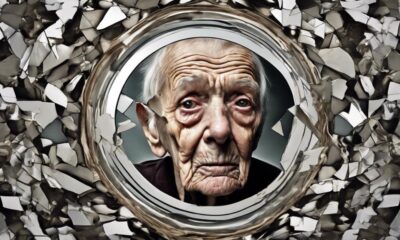
 Dementia Care2 months ago
Dementia Care2 months agoUnderstanding Narcissism and Dementia: A How-To Guide
-
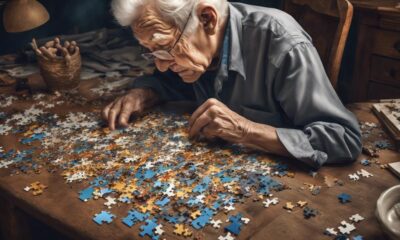
 Dementia Care2 weeks ago
Dementia Care2 weeks ago10 Engaging Dementia Games for Cognitive Stimulation
-

 Palliative Care for Parkinson's2 weeks ago
Palliative Care for Parkinson's2 weeks agoPalliative Care for Parkinson’s: A New Hope for Patients”
-

 Dementia Care2 months ago
Dementia Care2 months agoHow to Deal with a Parent’s Dementia: A Practical Guide
